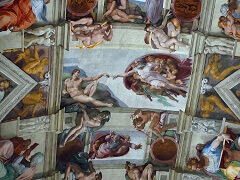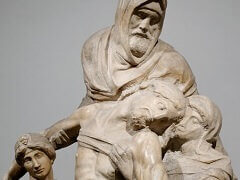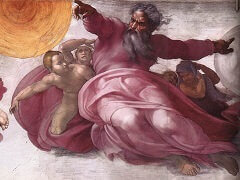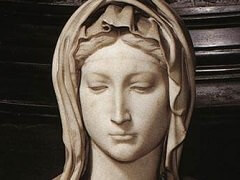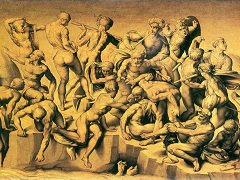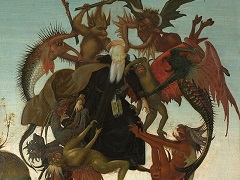Risen Christ, by Michelangelo
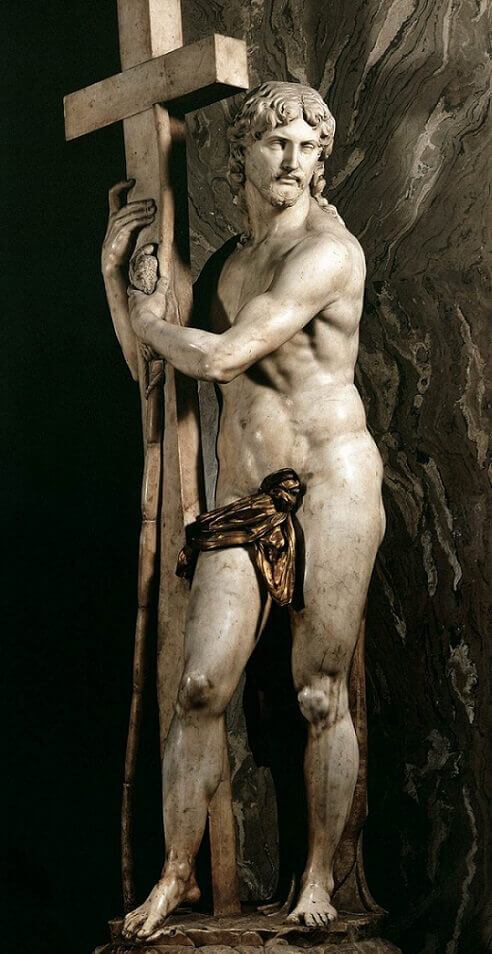
Risen Christ is made of marble; it is 80.75 inches high; and it is housed at the church Santa Maria sopra Minerva, Rome. Michelangelo made a contract in June 1514 A.D. that he would make
a sculpture of a standing, naked figure of Christ holding a cross, and that the sculpture would be completed within four years of the contract. Michelangelo had a problem because the marble he
started carving was defective and had a black streak in the area of the face. His patrons, Bernardo Cencio, Mario Scapucci, and Metello Vari de' Pocari, were wondering what happened when they
hadn't heard for a while from Michelangelo. Michelangelo had stopped work on the "Risen Christ" due to the blemish in the marble, and he was working on another project, the San Lorenzo facade.
Michelangelo felt grief because this project of the "Risen Christ" was delayed. Michelangelo ordered a new marble block from Pisa which was to arrive on the first boat). When the "Risen Christ"
was finally finished in March 1521 A.D., it was transported to Rome and was installed at the left pillar of the choir in the church Santa Maria sopra Minerva, by Pietro Urbano, Michelangelo's
assistant (Hughes, 1999). It turns out that Urbano did a finish to the feet, hands, nostrils, and beard of Christ, that many friends of Michelangelo described as disastrous). Furthermore,
later-on in history, nail-holes were pierced in Christ's hands, and Christ's genitalia were hidden behind a bronze loincloth. Because people have changed this sculpture over time; many are
dissappointed with this work of art because it is presently different than the original work that Michelangelo made. The "Risen Christ" had no title during Michelangelo's lifetime.
This sculpture was given the name it has now, because Christ is standing like the traditional resurrected saviour, as seen in other similar works of art.
The ideas that Michelangelo intended to convey for this sculpture through symbolism are: Christ's sacrifice; and the "promise of physical resurrection in a perfected body" because Michelangelo
originally made the figure without any injuries or nail holes. What makes this work of art brilliant, is Michelangelo's use of contraposto; and his attention to detail regarding physique.
Notice the elaborate, detailed chest and upper abdomen muscles that Michelangelo exhibits in the "Risen Christ". These detailed and unique sculptural characteristics distinguish the art created
by Michelangelo, an artistic genius, from works of art created by other artists.


